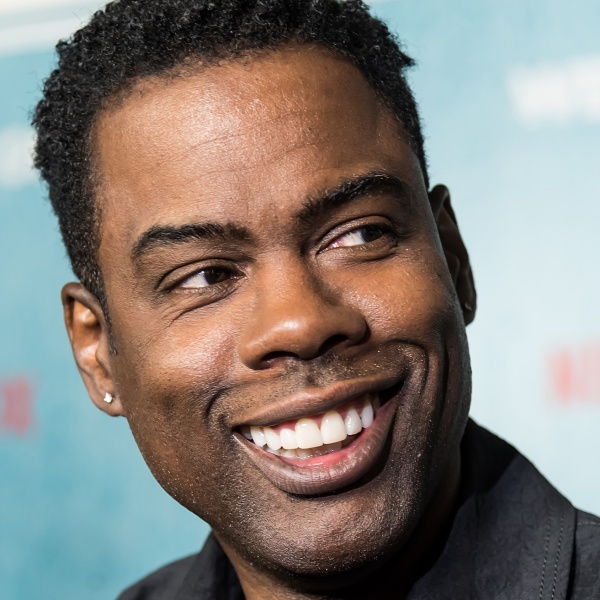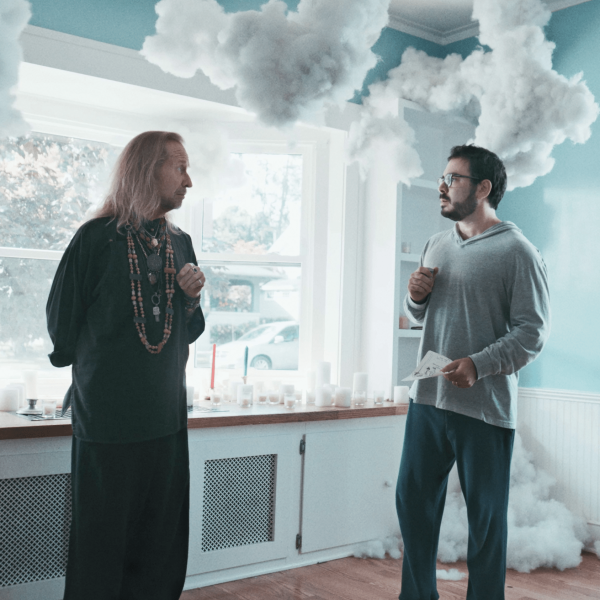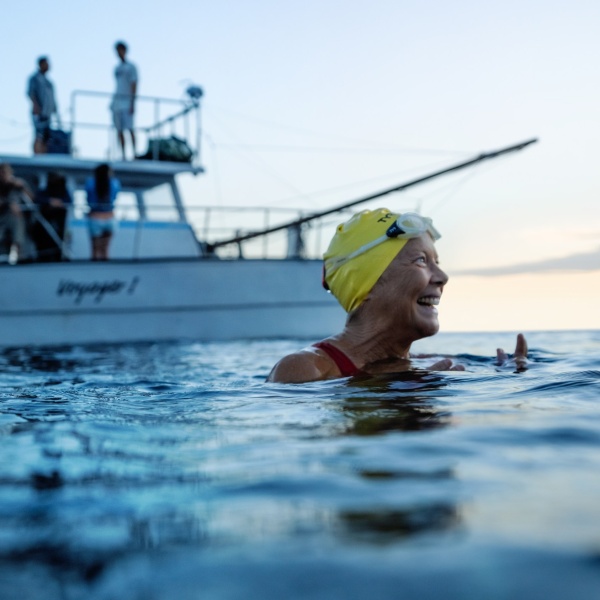With
After “Meru,” Oscar-winning “Free Solo,” and “The Rescue,” we knew that directors Jimmy Chin and Chai Vasarhelyi delivered stunning visuals and provocative storytelling. With festival hit “Nyad” (October 20 in theaters, November 3 Netflix streaming), based on the story of cranky competitive swimmer Diana Nyad and her refusal to abandon her dream, none of their skills were lost in translation to the scripted world
Nyad’s story of swimming 110 miles in open ocean from Cuba to Florida is well aligned with the filmmakers’ own profiles: Chin is a star mountain climber and cinematographer; Vasarhelyi is a relentless producer-organizer who always pushes for perfection. “It’s very true to brand, about someone who can’t give up ever,” Vasarhelyi told me. “Finally she did it on the fifth try, when she was 64.”
This propulsive two-hander stars Annette Bening, who also was 64 when she played the part after a year of training. Jodie Foster portrays her former lover-now-trainer, and it’s the actress’ first role as an openly gay woman. Both have inspired Oscar talk, with four-time Oscar nominee Bening swimming in difficult conditions for long hours with prosthetic makeup that made it hard to breathe. They make these tough women believable and not always likable.
When Netflix bought the project, which is based on Nyad’s memoir “Find a Way,” the streamer insisted pushing back their start date by nine months to avoid hurricane season. “Netflix said, ‘We want to finance it at a higher price at a higher budget level,’” said Vasarhelyi. “Normally you just want to make your movie, it doesn’t matter if it’s hurricane season or not. But they had a lot of different concerns. So we waited and that actually allowed Annette more time to train.”
That extra time gave Bening “an effortlessness in the water and a comfort that you can’t create unless you’ve trained for it,” said Chin. “She was in the water for four to six to eight hours and we had 30 days in the tank. We would never have finished on schedule if she hadn’t had been able to do that.”
In addition to the prosthetics and the makeup, Bening also acted with her swimming stroke. “She did all the swimming; our stunt doubles and body doubles ended up just doing safety stuff,” Chin said. “Annette was like, ‘No, people are going to see my stroke. They’re going to recognize if it’s someone else’s. I’ve trained a year to have this stroke.’ And so she did all the swimming.”
Foster’s training also showed. “Those are her abs,” said Chin. “Those are her guns. And she actually said to me, ‘This is the first time I’m being objectified.’ But when she walked on set the first day, we were like, ‘Holy shit. She is ripped!’”
Foster also remained true to her role in looking out for Bening on set. “Jodie was always so worried about Annette in the water,” said Vasarhelyi. “Jodie would say, ‘How many hours has she been in there? Is she doing okay?’”
The nine months also allowed Bening and Foster to become close friends. Foster was already friendly with Nyad and Stoll. “They became a crew together,” said Chin. But when it came time to shoot the movie, Nyad stayed away and gave Bening and the filmmakers room to create their own version of her story, warts and all. Controversies have long dogged her and inevitably erupted during the Telluride Film Festival.
“The film was never about records,” said Vasarhelyi. “And what annoys me was that this film was about a woman who in her 60s, wakes up one day, while the world thinks they’re done with her, she’s not done with the world. That’s what’s remarkable about Diana’s story. We were committed to showing the complexity of her character and how unlikable and off-putting she could be.”

Chin is familiar with the back-biting competition of athletes competing at the edge of their ability. “There’s always traditionalists and purists who say, ‘Oh, this isn’t the way it’s been done before,’ or are threatened. I wasn’t totally surprised by it, but clearly there’s no doubt that she did this incredible swim. There were 40 people who were witness to it. There’s the courage to face physical risks and physical dangers. But the real courage is to chase a dream that you can fail at, and that’s when you’re most vulnerable.”
Chin and Vasarhelyi were also vulnerable in moving from documentary filmmaking, where you’re looking at what’s in front of you, to fiction, where you’re creating what’s in front of you. “The moment I made my first good decision on set,” said Vasarhelyi, “I had this relief of understanding that the instincts absolutely translated. With Jodie Foster and Annette Bening, because of the 20 years I’ve spent shooting docs, the instinct of emotional truth worked.”
Chin also said working with the actors was easier than “trying to get Alex [Honnold] to do things he didn’t want to do [in “Free Solo”]. Those instincts of filmmaking and story and emotion and the subtext of what each scene is about? Those were all instincts that were pretty well honed. Working for 20 years with high-end athletes also translated, because when when you work with a world-class athlete, you’re often are trying to create the space for them to perform at their best.”

For Vasarhelyi, “ignorance is bliss,” she said. “And hubris to a certain level. We were like, ‘Oh, we’ve shot in the Himalayas, shot with no ropes, and in the deep caves.’ Nothing would have prepared us for that water work.”
However, the biggest adjustment for the filmmakers may have been the single-bore focus required for a fiction feature. “No one told me that in my 40s, after 12 years of marriage, that our marriage would grow, and that we would evolve,” said Vasarhelyi. “And that we would find new depths and new meaning and new connection. It was hard. Jimmy and I had never spent this much time together, next to each other. It was incredibly meaningful.”
They also had to give up their usual non-fiction crew. “Suddenly, we were an island,” said Vasarhelyi. “We needed each other more than ever.”
“Just because of the pressure and the compressed nature of moviemaking,” said Chin. “When you’re on set, you’ve got that time pressure. You’re either going to get this shot or not. If you need to take another take, you’re gonna lose that shot or that scene. Everyone is looking to the two of you to have a singular vision and be able to express that. That was hard. Total survival mode.”
Editing was another area where non-fiction and fiction skills were in sync. “I brought the same delight that I bring in nonfiction to this edit,” said Vasarhelyi. “And there’s an intellectual curiosity and flexibility that comes from our process with docs, where we break the movie, over and over and over again, trying to find new things. We had a good time with Chris Tellefsen [“A Quiet Place”], because he’s similar. And that felt very natural.”
Next up: The duo return to documentaries with multiple NatGeo projects, including series Photographer and portrait of explorer Ernest Shackleton and his ship The Endurance. “It’s the ultimate story of survival and leadership and exploration for the sake of exploration,” said Vasarhelyi. “It’s using a lot of [Frank] Hurley’s original footage, because Shackleton brought a cinematographer with him. And we had a crew on the boat that actually found The Endurance. It’s like real-life Indiana Jones and they’re the best in the world at what they do. Burberrys are remaking all the outfits for us, with original cloth and fabric. I got to go to the Royal Geographic Society and they let me hold Charles Darwin’s sexton. There’s fun things that come with this terrain!”





